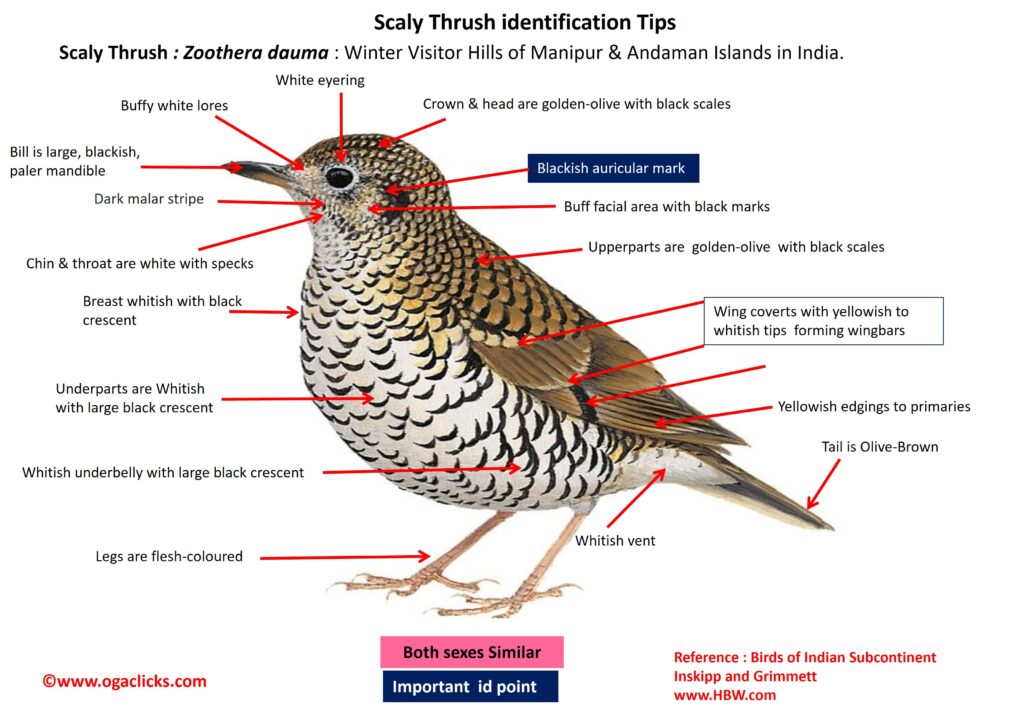
Scaly Thrush Zoothera dauma
Etymology:
- Zoothera : Greek word zoon animal; theras –hunter
- Dauma : Bengali name dama for Orange-headed Thrush
Distribution: Resident of Western Himalayas Eastwards to Assam; Winters south to plains of North East India up to Orissa.
Description: Size of 28–30 cm; wt. of 88–130 g. It is a large, golden-olive to yellowish-looking thrush. The adult has plain whitish face, with white eyering, black-stippled malar and ear-coverts, blackish auricular mark. The body is scaled black on white above and below (white on belly and vent), with tinges of buff on upperparts and in wings, which have blackish tips to primary-coverts, yellowish to whitish tips on median and greater wing-coverts (forming two pale wingbars), and yellowish edgings of mid-lengths of flight-feathers and primary-coverts. The tail is blackish, central feathers are paler and greyer, white tips to outer feathers. The underwing is blackish, axillaries are white, has a broad pale buff central band. The iris is brown; bill is large, blackish, paler mandible; legs are flesh coloured. Both the sexes are similar. The juvenile is buffier above, more spotted than scaled below.
Habitat: It is found during breeding in mature broadleaf forest, e.g., oak, and conifer forest, e.g., silver fir and spruce), with dense bushy understorey and apparently deep moist soil. It is found at at 2400–3600 m. In winters it is found in dense forest with bracken-dominated undergrowth, grassy clearings, edges of pastures, Sal Forest, wooded stream sides, bamboo clumps and mango groves, from plains to 1800 m.
Food habits: It eats Invertebrates, including worms, insects and their larvae, small slugs and snails; also berries. Forages on ground or in low vegetation, with shivering nervous bobbing walk, often rapidly fanning and raising tail; turns over leaf litter with bill. It is active at first light and last light, when often uses forest tracks and roads.
Breeding habits: They breed in Apr–Jun in Himalayas. The nest is a large cup of moss, twigs, grass and roots, with basal rim of mud, twigs and moss, lined with fine rootlets, fern stems and fibres, placed up in tree fork, bush or bank . They lay a clutch of 2-3 eggs.